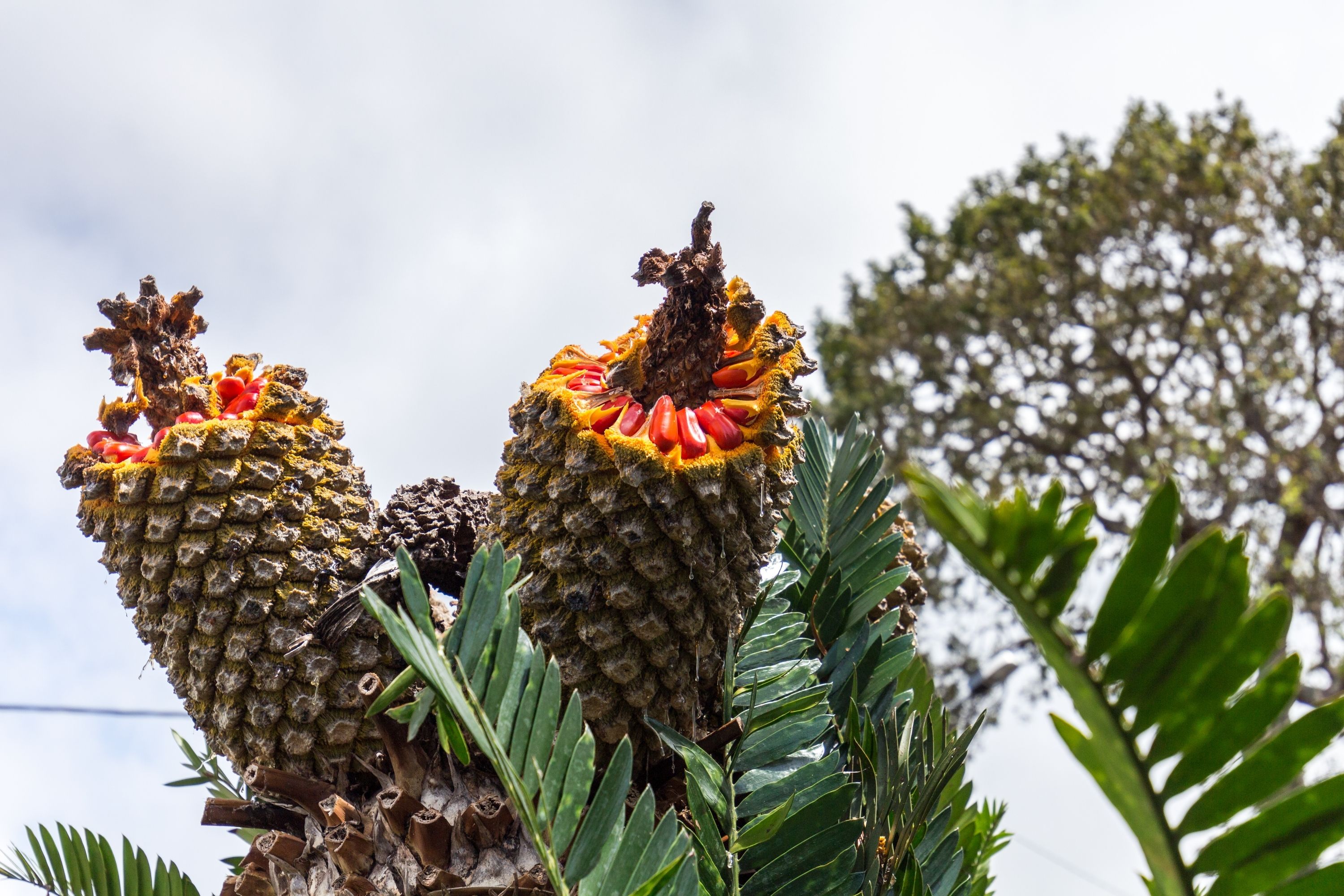Encephalartos tegulaneus
(Encephalartos tegulaneus)

Description
Encephalartos tegulaneus, the Kenyan giant cycad, is a species of cycad endemic to Kenya. It occurs in Eastern Province near Embu, Kenya, and on the Matthews Range in Rift Valley Province. E. tegulaneus ssp. powsii is critically endangered due to overcollecting and a very limited distribution. The other subspecies are not critically endangered. It is a cicada with an arborescent habit, with an erect or sometimes decumbent stem, up to 10 m high and with a diameter of 30–55 cm. The leaves, 120–180 cm long, are arranged in a crown at the apex of the stem and are supported by a 15-20 cm long petiole; they are composed of numerous pairs of lanceolate leaflets, with entire margins, on average 16–22 cm long, reduced to spines towards the base of the petiole. It is a dioecious species with male specimens that have 3-6 subcylindrical cones, 40–50 cm long and 12–14 cm broad, of bright yellow color, and female specimens with 1-4 ovoid cones, 40–70 cm long and with diameter 19–30 cm, golden yellow in color. Encephalartos is a genus of cycad native to Africa. Several species of Encephalartos are commonly referred to as bread trees,bread palms or kaffir bread, since a bread-like starchy food can be prepared from the centre of the stem. The genus name is derived from the Greek words en (within), kephalē (head), and artos (bread), referring to the use of the pith to make food. They are, in evolutionary terms, some of the most primitive living gymnosperms. All the species are endangered, some critically, due to their exploitation by collectors and traditional medicine gatherers. The whole genus is listed under CITES Appendix I which prohibits international trade in specimens of these species except for certain non-commercial motives, such as scientific research. Several of the species possess stout trunks. In E. cycadifolius, the main trunks are up to 10 feet (3.0 m) high, and several of them may be united at a base where a former main trunk once grew. The persistent, pinnate leaves are arranged in a terminal spreading crown, or ascending. The rigid leaflets are variously spiny or incised along their margins. The leaflets have a number of parallel veins and no central vein.
Taxonomic tree:







